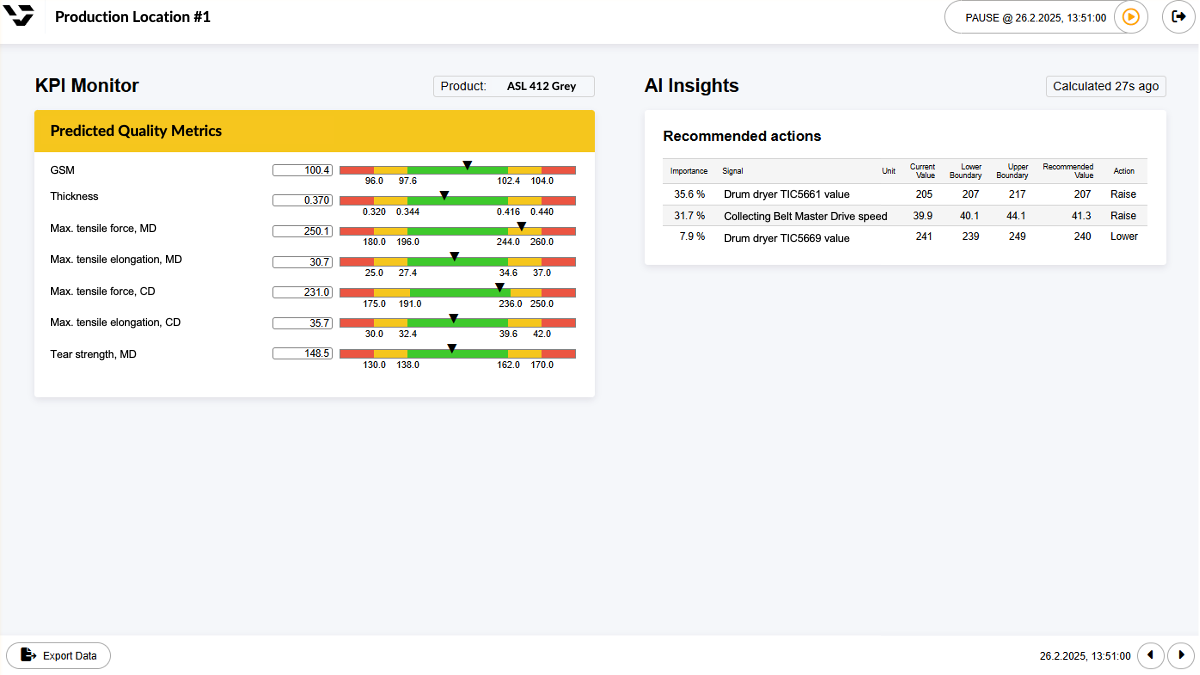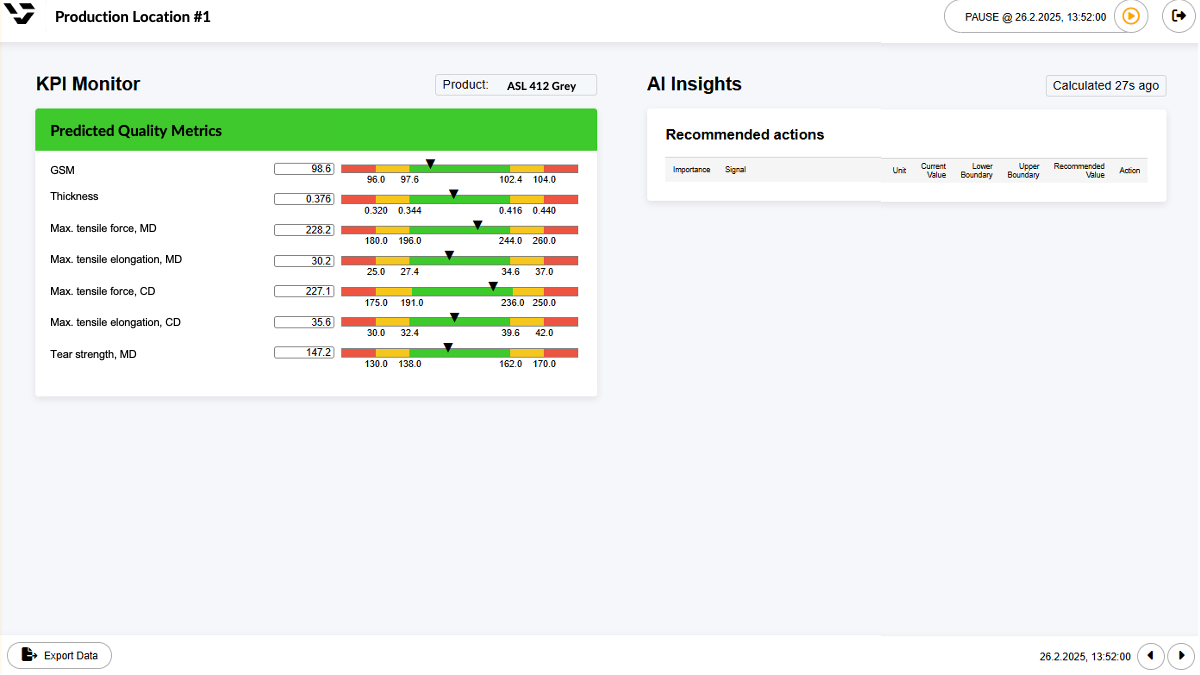- Solutions
- Company


Manufacturing Excellence frameworks like Lean, SPC and Six Sigma have enabled manufacturers to reduce waste, boost productivity, and improve quality through structured projects. However, today's manufacturing environment has evolved dramatically.
Modern production lines have become more complex, faster, and increasingly variable. Imagine managing 1,600 measured parameters, 60+ controllable signals, and multiple critical quality KPIs simultaneously - each influenced by numerous interdependent factors. Teams face the constant challenge of balancing conflicting objectives like energy efficiency, consistent quality, lower CO₂ emissions, and maximized throughput.
Such complexity is common in industries, such as papermaking, gelatin production, steelmaking, nonwovens production, electrode manufacturing and many more. In these fast-paced scenarios, quick and precise decision-making isn't just helpful - it's essential.
Traditional frameworks like PDCA or DMAIC remain valuable but struggle with:
These methods aren’t ineffective; they're simply not designed to handle the speed, complexity, and real-time requirements of modern operations.
As a result, even skilled teams are forced into making countless micro-decisions without systematic support, leading to unnecessary energy use, quality deviations, waste, and lost throughput - ultimately keeping overall equipment effectiveness (OEE) below its true potential.
This isn’t a failure of CI—it's a sign that something more is needed. What teams need now is not more analysis, but real-time, in-the-moment support.
Traditional improvement methods like Lean and Six Sigma are essential for building robust processes. But they're inherently project-based—and that’s where PBX picks up.
PBX (Process Booster X) is your real-time Manufacturing Excellence Copilot - an intelligent system that deeply understands your process and continuously guides operators to the best possible actions, moment by moment.
It complements CI by actively steering operations through variability, trade-offs, and constantly changing conditions, closing the gap between analysis and action.
Here's how PBX works:
Additionally, PBX optimizes explicitly defined goals like energy efficiency, cost reduction, or carbon footprint. This ensures all real-time recommendations are not only accurate but fully aligned with your business objectives.
PBX works best for complex, dynamic, data-rich processes needing continuous, multi-KPI optimization. PBX isn't suited for stable, simple, or data-poor environments without clear control levers.
PBX is most effective when:
✅ You monitor hundreds or thousands of parameters
✅ You need to balance multiple, often conflicting KPIs (e.g., quality, energy, CO₂)
✅ Your team is stretched thin and can’t watch everything
✅ Process improvements tend to fade after project completion
✅ Real-time guidance could prevent costly deviations
PBX is not the right fit if:
❌ Your process is already stable and running at optimal performance
❌ You lack reliable sensor data or basic data infrastructure
❌ There are no viable interventions or control levers
❌ CTQs are not defined or business priorities are unclear
Here’s how PBX works in a real-world example:


One minute after implementation, the drifting KPI is back under control - without disturbing the stability of the other quality indicators.
PBX doesn’t just optimize - it helps you understand your process better.
By watching how PBX adjusts in real time, teams can spot factors that aren’t directly measured - like ambient temperature, material variation, or utility fluctuations. These patterns often reveal indirect effects that point to gaps in sensor coverage or process design.
Example: PBX regularly increases ventilation during summer, even though ambient temperature isn’t part of the input data. This behavior suggests heat is affecting performance. With that insight, CI teams can take targeted action, such as improving cooling or adding a temperature sensor.
Over time, PBX turns day-to-day operations into a steady source of insight. Each intervention adds to your understanding of how the process behaves, even when some variables aren’t tracked yet.
Book a free demo / discovery call. In 60 minutes, we’ll explore your biggest challenges - and show how PBX can help you unlock hidden drivers, balance competing KPIs, and sustain CI in real time.
#ManufacturingExcellence #ContinuousImprovement #SixSigma #CausalAI #SmartFactory #PBX #ProcessOptimization